Samsung Galaxy Watch Hands-On: Fashion Meets Fitness
Samsung's newest smartwatch is fast and stylish, but can it compete with the Apple Watch?
Samsung was the first big tech company to go all-in on smartwatches back in 2013 with the Galaxy Gear. But the world wasn't quite ready for wrist computers, especially ones that were bulky, slow and not all that useful.

A lot has changed in five years. The Apple Watch dominates the wearables market, thanks to a focus on health and deep integration with other Apple devices. Samsung has lagged behind; despite new versions of the Gear rolling out each year, Samsung's smartwatches still haven’t caught on.
MORE: Apple Watch vs. Samsung Galaxy Watch: Which Smartwatch Is Best?
With the Galaxy Watch, out today (Aug. 24), Samsung is doubling down. The new watch promises lengthy battery life, cellular connectivity, advanced fitness features and a more fashionable design than the Apple Watch, in a package comparably priced to Apple's watches.
After using the 42mm rose-gold Bluetooth edition for a few days, I confess this is my favorite Samsung smartwatch by a mile. But does it beat the Apple Watch? I'm on the fence.
Samsung Galaxy Watch Specs
| Price | $330-$350 for Bluetooth model; $380-$400 for LTE model |
| Size | 42mm, 46mm |
| Display | Circular Super AMOLED (360 x 360) |
| Colors | Midnight Black, Rose Gold (42mm); Silver (46mm) |
| OS | Tizen OS 4.0 |
| Music Storage? | Yes, with offline Spotify playlist support |
| Water Resistance? | Yes, up to 5 ATM (swim-proof) |
| GPS? | Yes |
| Heart Rate Monitor? | Yes |
| Mobile Payments | Samsung Pay |
| LTE? | Yes, for a $50 premium over the base Bluetooth modeT |
| Other Fitness Features | Heart rate-based stress-management tool |
Design
Samsung has struggled to appeal to a wide audience with its giant watches. The Gear S3 Frontier is 46mm, which is so massive on my petite wrist that it extends beyond my wrist bones. I just can't wear it.
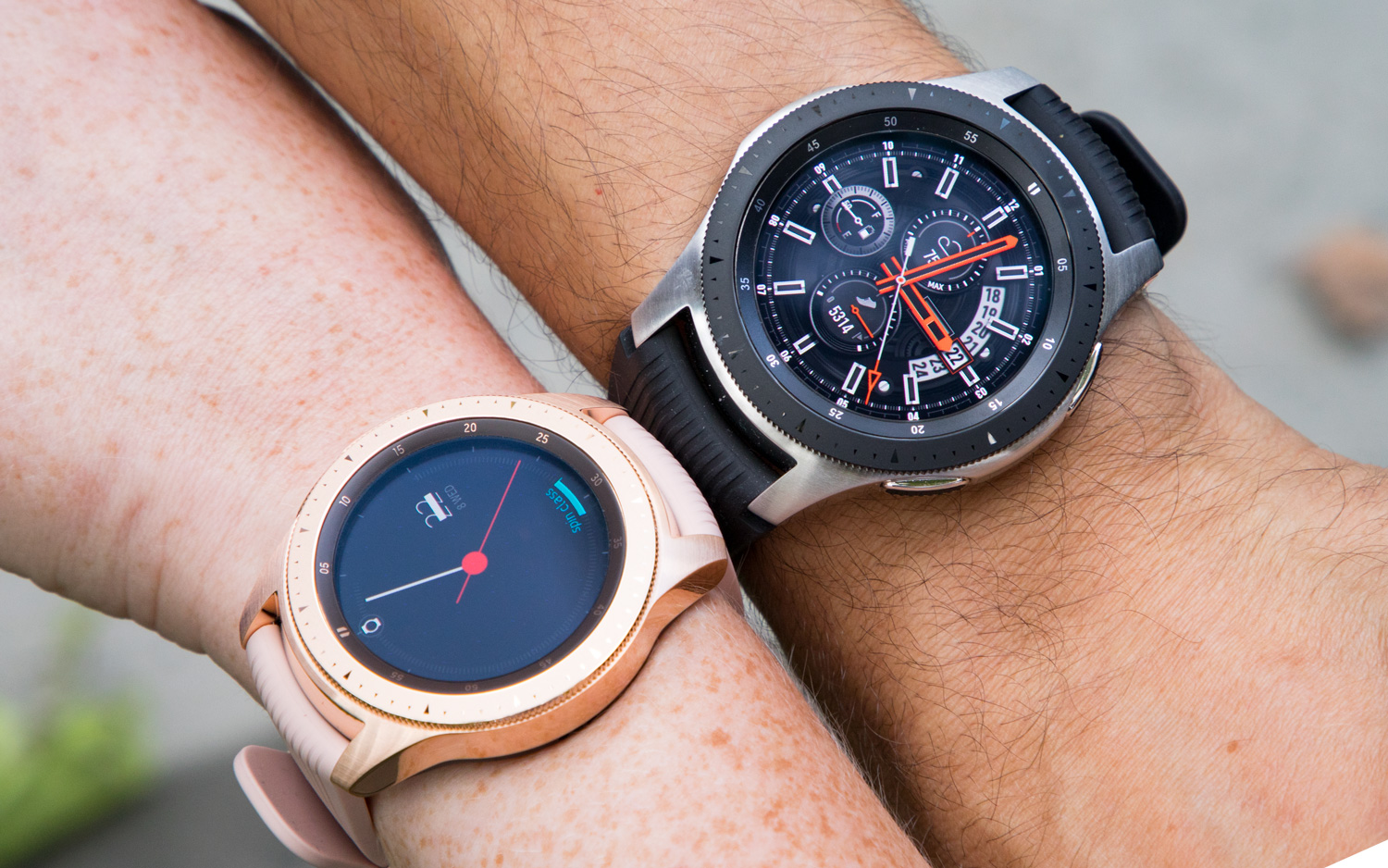
The Galaxy Watch is still a little larger than I'd prefer for a smartwatch, even the 42mm model I tested, and it's a little heavy at 1.73 ounces. The 46mm version is even heftier at 2.22 ounces. To compare, a 5.8-inch Galaxy S9 is 5.8 ounces.
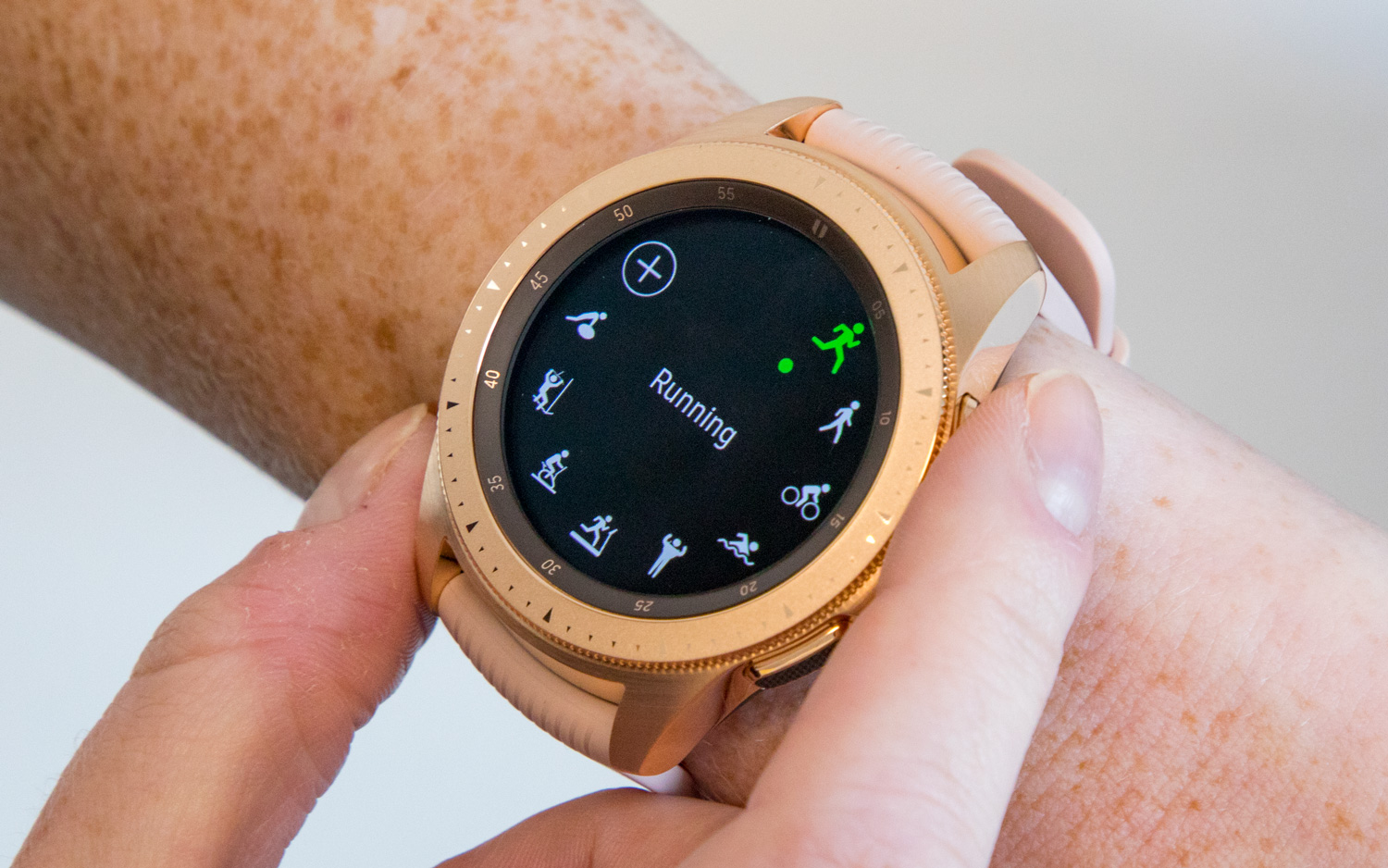
But I love the way it looks, despite its bulk. The rose-gold model is a true rose gold, as opposed to the pink that other manufacturers have tried to pass off as rose gold. (My rose-gold Apple Watch Series 2 is pink, there's no getting around it.) And the circular case is rounder than past Samsung watches, including last year's Gear Sport, which sported a squared-off case despite its round face.
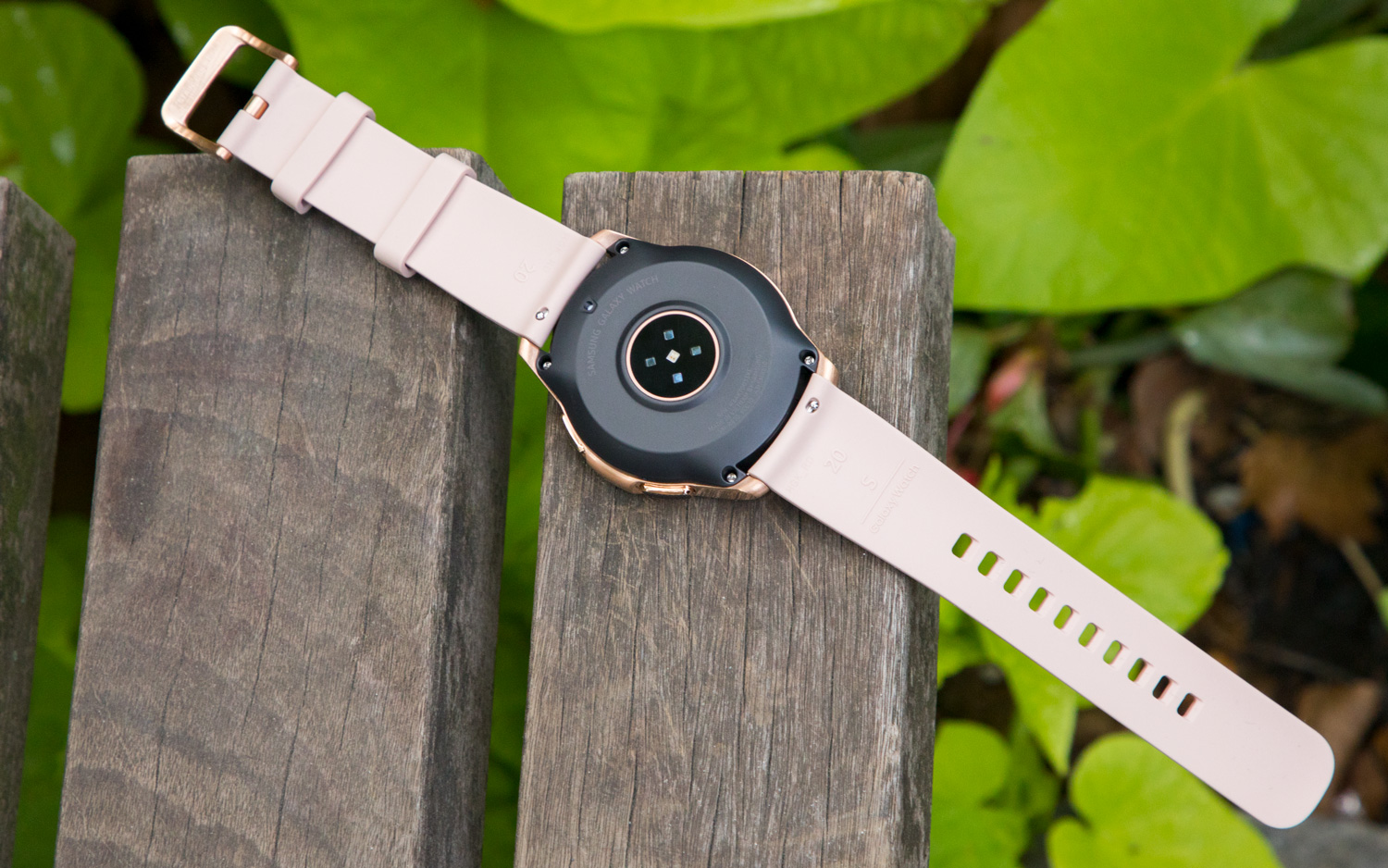
Samsung is sticking with the rotating bezel it introduced as a navigational tool in previous Gear watches, which is a similar approach to Apple's Digital Crown. Sometimes you need a way to navigate a small screen that doesn't involve your large fingertip, and I think the rotating bezel is an elegant solution.
After wearing the Galaxy Watch for a few days, I do still feel its weight, but it's not obtrusive enough to be uncomfortable while sleeping or working out.
Health and Fitness
I’ve used the Galaxy Watch to work out five time — two walks, two 3-mile runs and one spin class — and found it to be a perfectly capable exercise companion. The watch tracks heart rate accurately (as compared to a Polar H10 chest strap).
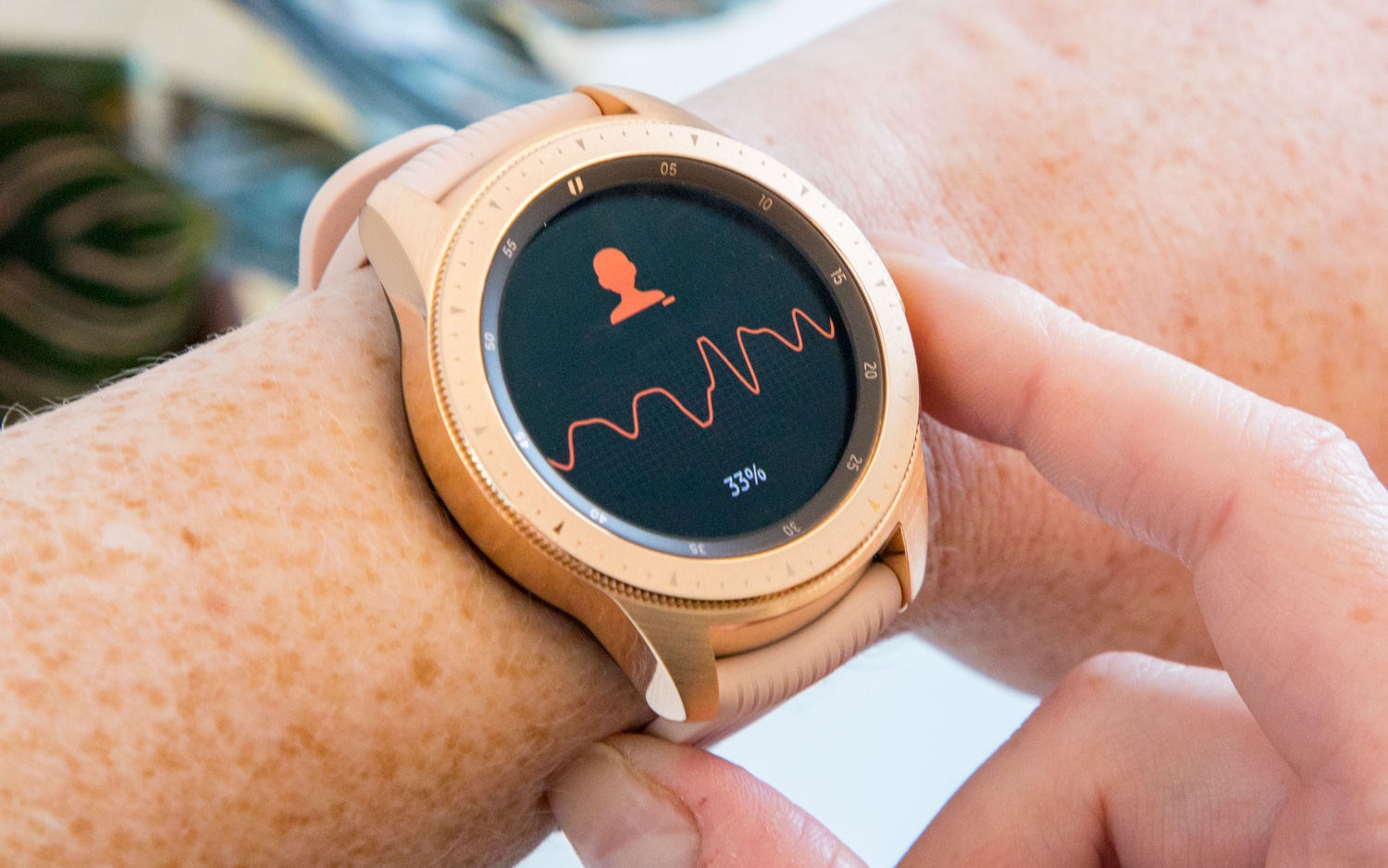
The Galaxy Watch introduced automatic exercise-tracking for six workouts, including running and cycling. I ran the same route on two separate days, one with workout mode activated and one without. In automatic mode, GPS doesn't kick on to track your route, so the mileage isn't exactly spot-on, but it was close enough. You won't get a map of your run afterward, so start a workout on the watch before taking off if you want more detailed analysis.
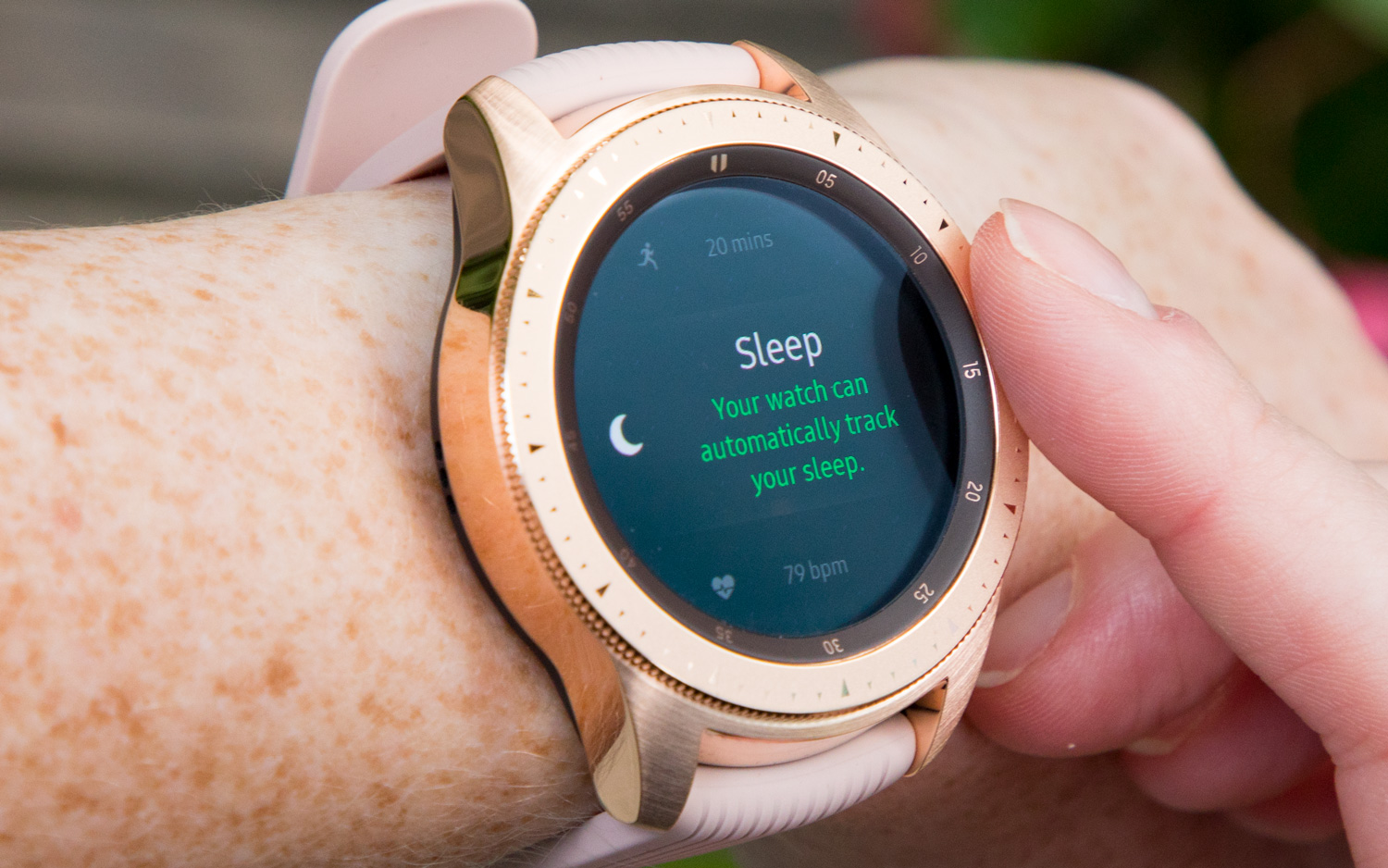
Samsung introduced more detailed sleep analysis in the Galaxy Watch, too. It was fairly accurate in my initial testing, but not quite as good as Fitbit's Sleep Stages. On a night when I was startled awake by a loud noise, the Galaxy Watch recorded my sleep before and after the disturbance as two separate sleep events, and it got the times exactly right.
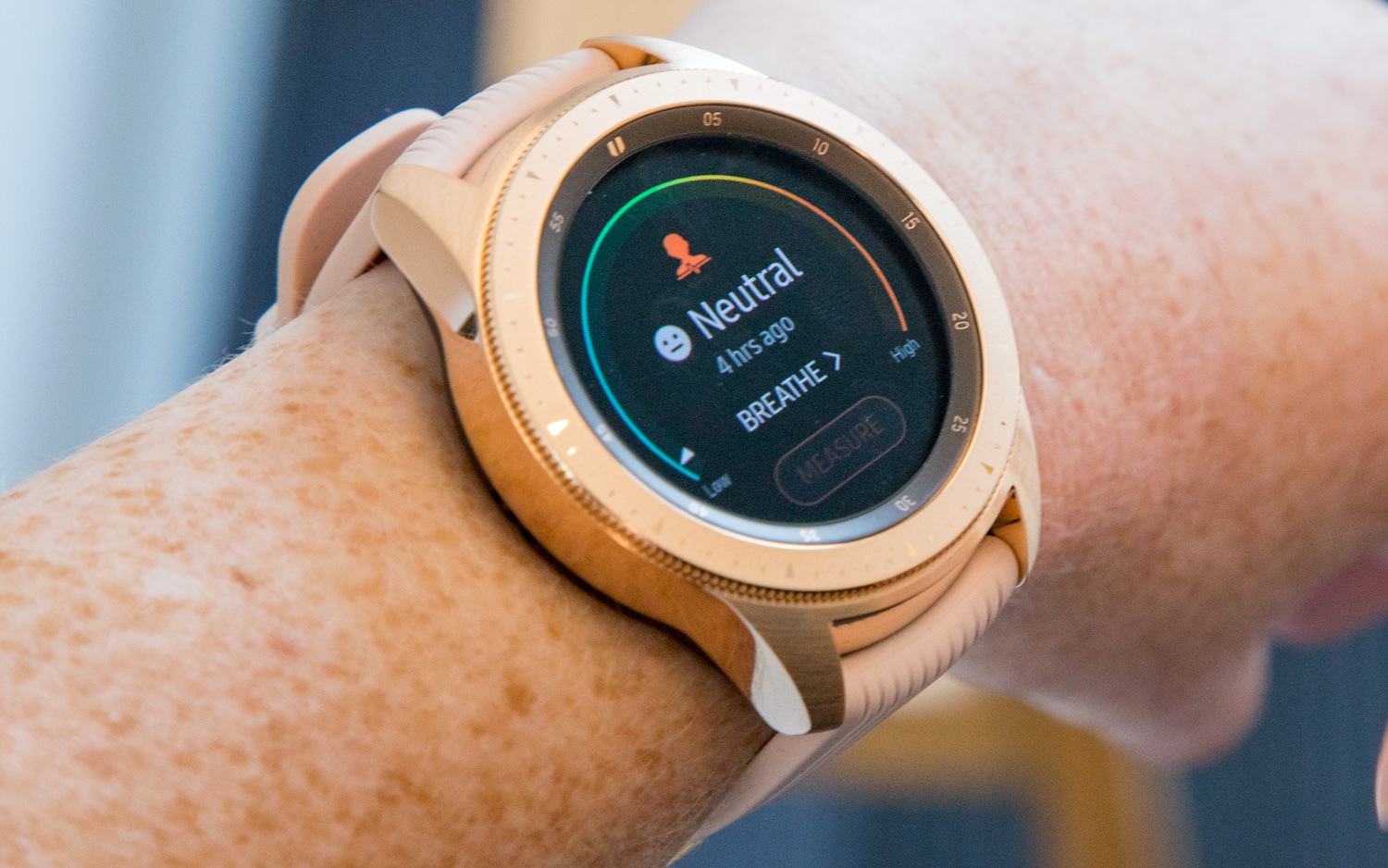
Samsung is experimenting with health-related alerts, starting with a stress management feature that measures your heart rate and guides you through breathing exercises when it spikes too high outside of a workout. I still haven't received a stress alert, but maybe I'm just way more chill than I thought.
Software
Samsung is sticking with Tizen OS, the platform it developed for its smartwatches. Deviating from Wear OS allows the Galaxy Watch to use the rotating bezel as a navigational tool and last longer on a charge, because Samsung can optimize its processor and OS to work more efficiently together.
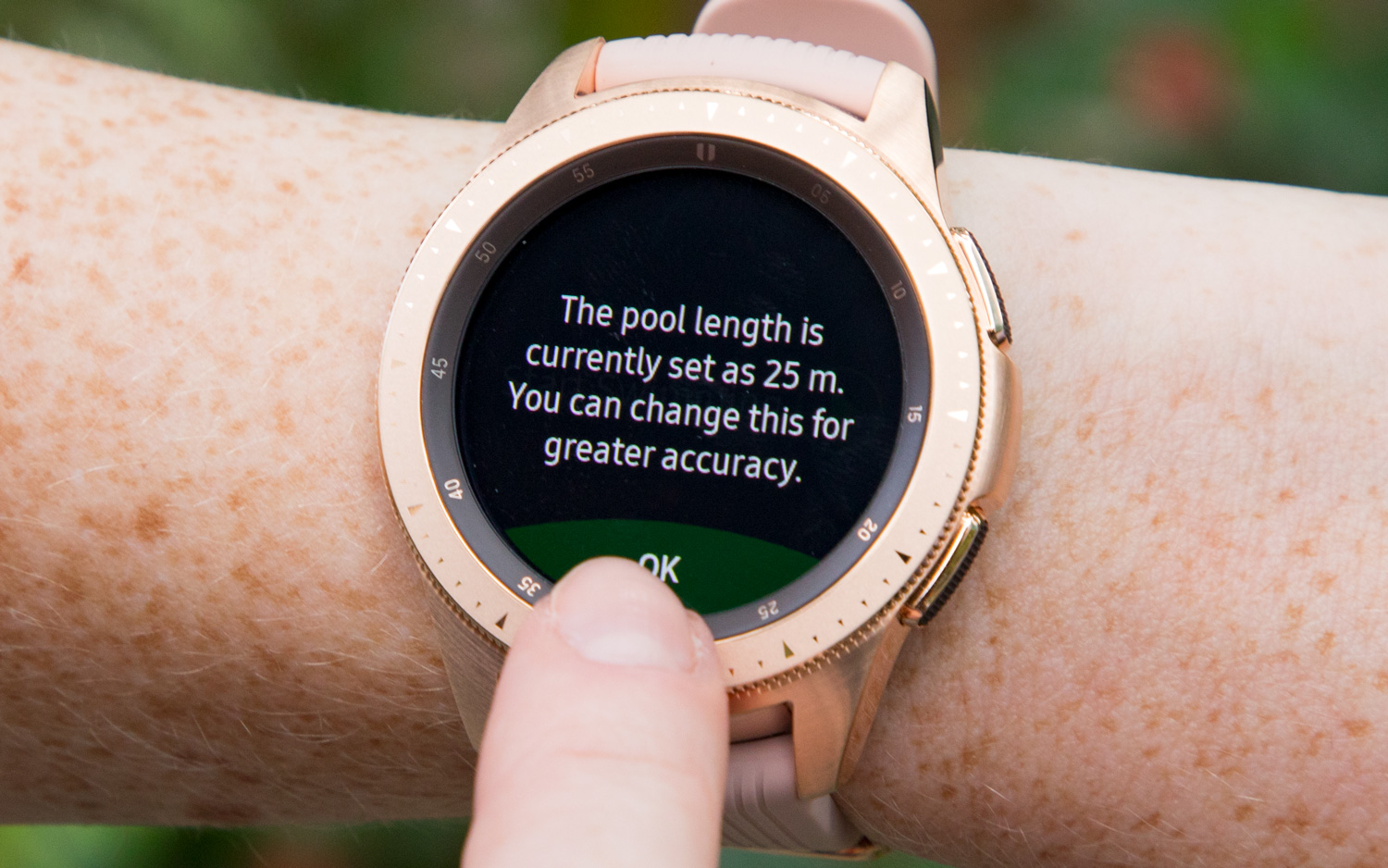
I prefer Tizen OS to Wear OS: The interface is easier to use, thanks to huge app icons and the rotating bezel. You can use the bezel to scroll through your most recently used apps, or you can access the home screen by pressing the bottom side button. (The top side button will take you back to the previous screen. A long press of the back button calls up Samsung Pay.)
Samsung's use of its own processor and operating system also makes the Galaxy Watch ultrafast. Apps open without any lag, unlike Wear OS watches, which are chugging along on an older Qualcomm Snapdragon 2100 chip. (Google plans to announce new watches with an updated CPU this fall.)
MORE: Which Android Wear OS Smartwatches to Buy and Avoid
The Galaxy Watch is compatible with both Android and iOS, but you'll get the best experience by pairing it with a Galaxy phone. The watch can unlock all of your other Samsung devices with a feature called Samsung Flow (Apple has a similar feature). You can also accept and reject calls, respond to messages and interact with smartphone notifications from the watch when it's paired to an Android phone; you can't do that with an iPhone.
Battery Life
Samsung is using its own processor and operating system to guarantee lengthy battery life, particularly in the cellular Galaxy Watch.
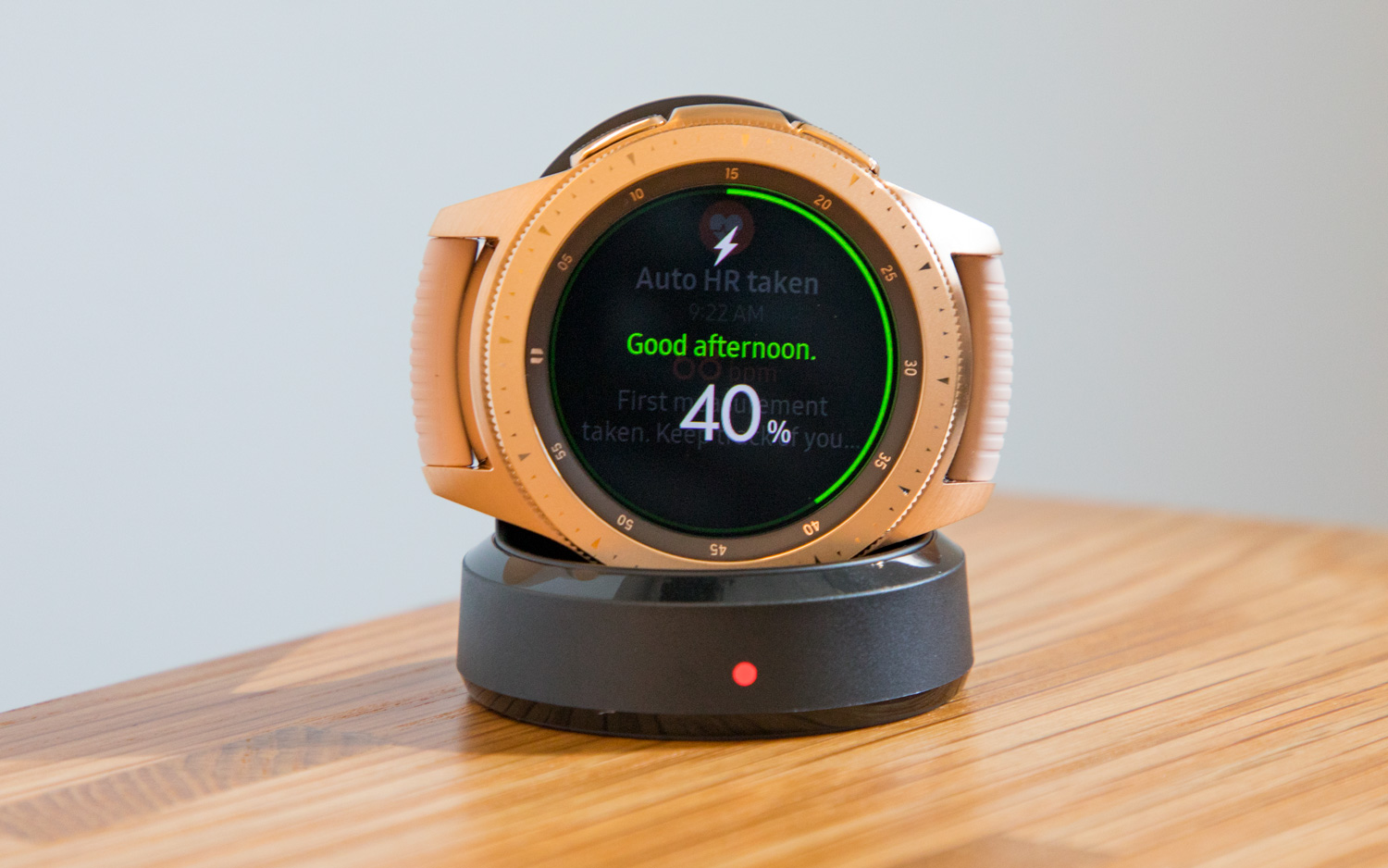
I've been using the 42mm Bluetooth watch, which has a 270 mAh battery compared with the larger 46mm model's 472 mAh battery. I topped it off before going to bed, and then tracked my sleep, a half-mile walk and a 3-mile run. A day and a half later, after average usage — adding calendar events, checking my activity stats, measuring my heart rate and other lightweight tasks — the watch was down to 63 percent. I could see it lasting four days on a charge, easily.
But I'm waiting to see if Samsung has nailed the battery-life issues that the LTE Apple Watch Series 3 struggles with. Samsung says the 46mm cellular model lasts up to four days on a charge and the 42mm version up to three days. I haven't been able to test an LTE Galaxy Watch, but I look forward to putting Samsung's claims to the test.
Outlook
Samsung isn't going to win over any iPhone owners, who will continue to gravitate toward the Apple Watch for the best experience with their devices. But Samsung doesn't need to persuade iOS users to splurge on a Galaxy Watch. It needs Galaxy phone owners and Android users to finally embrace smartwatches — or, rather, this particular smartwatch.
MORE: The Doctor on Your Wrist: How Smartwatches Are Saving Lives
Smartwatches built on Google's Wear OS 2.0 platform come in a range of styles and prices, but most of them aren't worth buying. An outdated processor and paltry battery life has held Android watches back as Apple has surged ahead. Even Fitbit developed its own smartwatch OS rather than build on Wear OS for its first smartwatch, last year's Ionic.
A new version of Wear OS is expected to roll out this fall, alongside a fresh lineup of Android smartwatches built around a cutting-edge processor. Samsung is sneaking in early with the Galaxy Watch, which uses the company's own operating system optimized for its own processor. That enables deeper integration with Galaxy devices, and guarantees better battery life.
My early impression: Samsung's Galaxy Watch is the best Android smartwatch you can buy right now. But that may not prove true for very long.
Stay tuned for our full review of the Galaxy Watch.
Credit: Tom's Guide
Sign up to get the BEST of Tom's Guide direct to your inbox.
Get instant access to breaking news, the hottest reviews, great deals and helpful tips.
Caitlin is a Senior editor for Gizmodo. She has also worked on Tom's Guide, Macworld, PCWorld and the Las Vegas Review-Journal. When she's not testing out the latest devices, you can find her running around the streets of Los Angeles, putting in morning miles or searching for the best tacos.
